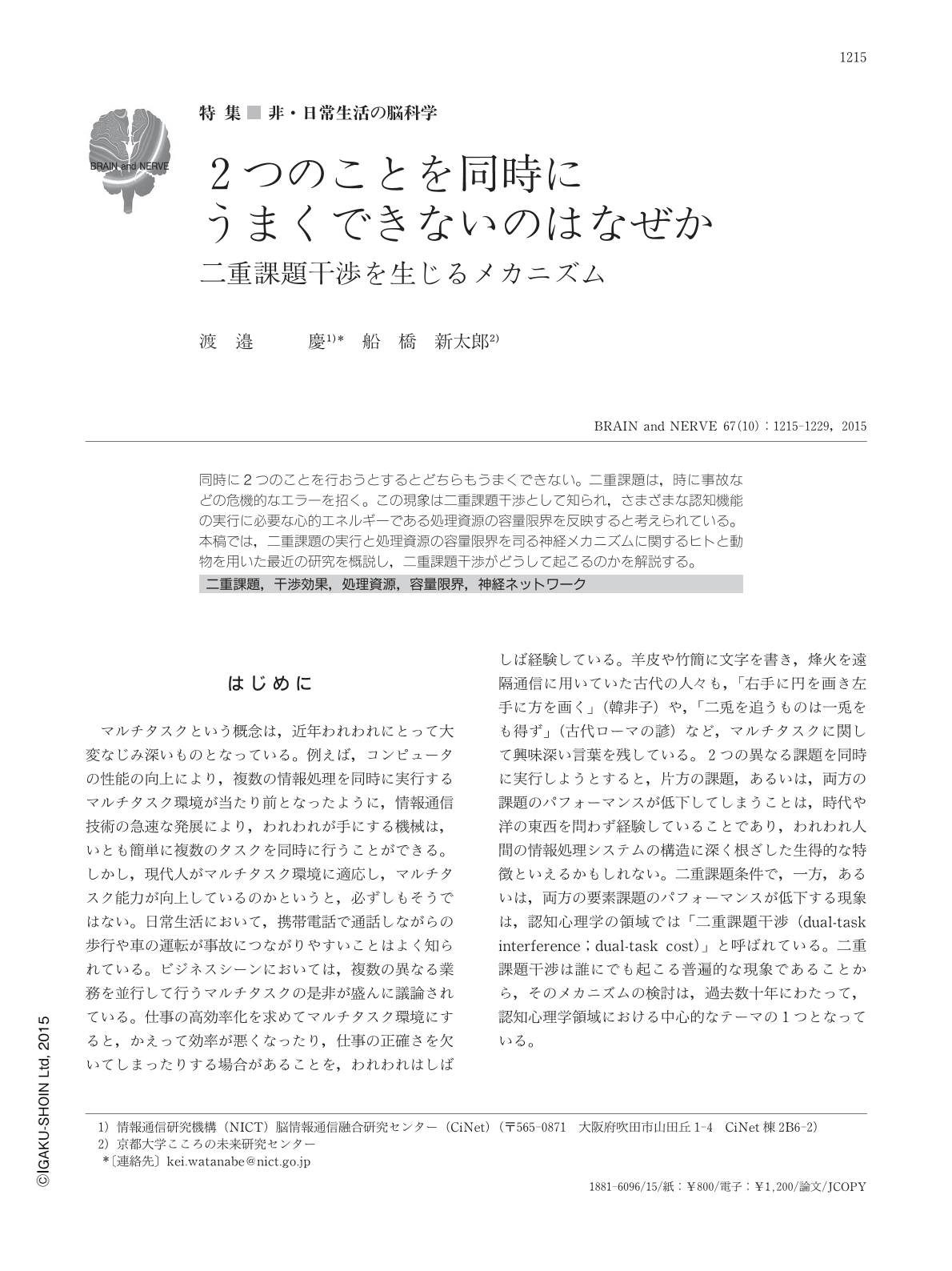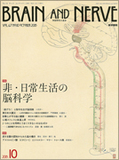Japanese
English
- 有料閲覧
- Abstract 文献概要
- 1ページ目 Look Inside
- 参考文献 Reference
同時に2つのことを行おうとするとどちらもうまくできない。二重課題は,時に事故などの危機的なエラーを招く。この現象は二重課題干渉として知られ,さまざまな認知機能の実行に必要な心的エネルギーである処理資源の容量限界を反映すると考えられている。本稿では,二重課題の実行と処理資源の容量限界を司る神経メカニズムに関するヒトと動物を用いた最近の研究を概説し,二重課題干渉がどうして起こるのかを解説する。
Abstract
Simultaneous performance of two tasks often results in degradation of performance in either or both tasks. This effect is known as dual-task interference and thought to be caused by the capacity limitation of cognitive resources used for cognitive processes. There have been several questions regarding dual-tasking in cognitive neuroscience: which brain area specifically participates in dual-task processing, what are cognitive resources, where are the cognitive resources located in the brain, what neural mechanism limits the capacity of cognitive resources, and whether cognitive resources are modality-specific or modality-general. Although human neuroimaging studies revealed that the prefrontal cortex plays an essential role in the dual-task performance, these studies could not determine the brain area specific for dual-task processing; however, the results of these studies supported the overlap hypothesis, which explains the neural mechanisms for allocating cognitive resources and the interference effect between two tasks during dual-task performances. Recent neurophysiological studies using monkeys revealed that neurons exhibiting dual-task selective activity are present in the prefrontal cortex and that dual-task interference is caused by the simultaneous and overloaded recruitment of the same prefrontal neural population by the two tasks. These results provide direct neural evidence for psychological concepts of cognitive resources and its capacity limitation.

Copyright © 2015, Igaku-Shoin Ltd. All rights reserved.


